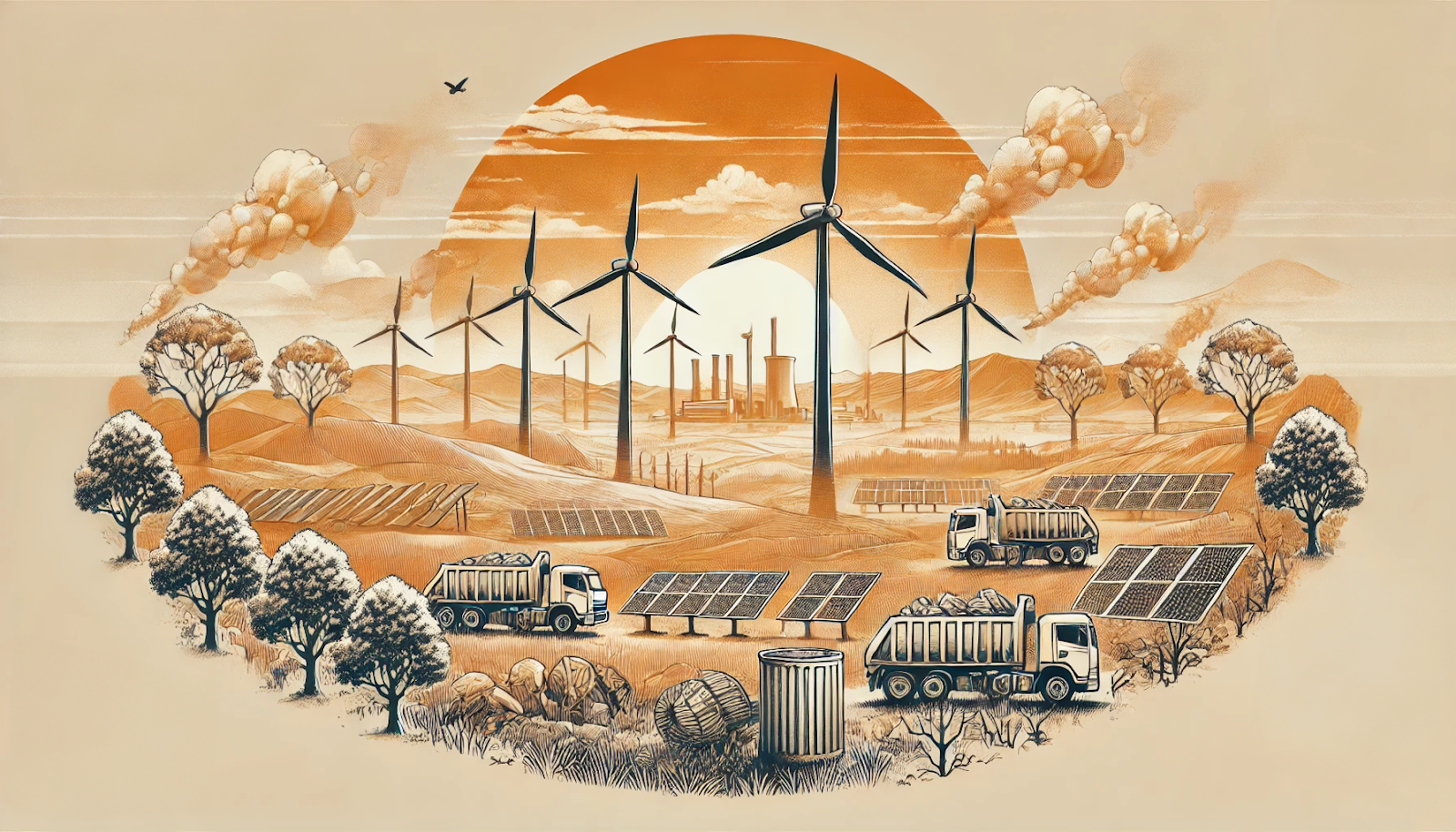Industry can profit from supporting the grid with new tech
New technology and new, cheaper energy storage options will empower the industry. The only way forward is to give industry a thermal battery and the ability to meet the demands of the grid directly on their side of the table.
- This is what we call industrial demand response, says Camilla Nilsson. - It will allow industry to act, to respond to the demands of the grid while ensuring its own energy needs are met. It's also a new way of getting paid.
It's quite simple: We have too much wind. If only we had somewhere to store the energy we harvest when the wind blows, a lot of dominoes would fall. Industry could get the cheapest kilowatts. Sometimes they could even be paid to take them when prices are negative. And later sell kilowatts back to the grid.
- And not only that, says Camilla Nilsson. - They could participate in flexibility markets and sell their storage capacity back to the grid.
- All this from a simple battery?
- You know, the smartest solution is often the simplest. The revenue stacking capabilities of a single thermal battery are quite profitable. This is exactly why policymakers should work to incentivise industrial demand response. Or, put more simply, why they should support factories that buy batteries.
To give just a few examples of such policies, they could include tax deductions for industrial companies that provide demand response from their side, low-interest loan mechanisms for the purchase of energy storage systems, contracts for difference with a feed-in tariff covered by the government if the system includes renewables plus energy storage, and finally investment tax credits or even tax deductions for storage.
While no single policy will work for all countries, the implementation of policies would have a huge knock-on effect, says Camilla.
- It would allow politicians to achieve other important goals much, much faster. Energy efficiency. Cutting emissions. Other energy investments would all improve if this one thing changed. It's in their interest, it's in the industry's interest - and it will inevitably benefit each and every one of us.
And it's possible now. If industry can charge its thermal batteries when there's a lot of energy in the grid, and wait to charge when there's less energy, it can contribute to a larger organism, a breathing grid.
- Electricity is on the move, says Camilla Nilsson. - We're seeing a transition to a world where energy is moving from a centralised energy system to a more decentralised energy system. From the few to the many.
- It makes sense. Everyone has to play their part to make the whole energy transition happen?
- Absolutely. This is where technology comes in. These small units need to communicate with each other. It's also an exciting development from a geopolitical point of view. If you have lots of small sources of wind and solar, and an industry that can adapt to what they produce, oil will become obsolete as a tool of power between countries. It will also cease to be a cause of conflict because everyone will be producing their own energy, says Camilla Nilsson.
Her thoughts echo the world's growing sense that a transformative shift is already underway.
- There are some bright spots in the chaotic world we find ourselves in. Energy as a tool of power will disappear. It will be produced locally, and very soon! Do you hear me, politicians?
3 reasons why Europe needs industrial demand response:
Renewable energy without storage is a waste
We have been good at producing renewable energy, but we have forgotten that it needs to be stored. Any investment in renewable energy must include measures for storage. Without it, we will never achieve full decarbonization of society
Local storage fixes grid congestion
We can’t build our way out of grid congestion. Demand for electricity is and will be too high and renewable energy is always too variable. Local storage is the only way to deal with load shifting and peak shaving.
Industrial demand response will cut emissions faster
When industry contributes to grid capacity, more polluters can electrify and cut emissions as grid congestion becomes less of a problem. Better traffic management on the grid leads to a faster green transition.
3 ways industrial demand response is a game-changer for profitability:
Make money by selling energy twice
That’s right. With industrial demand response and the integration of a battery system, your business can optimise energy use—buying electricity when prices are low, storing it, and reducing demand when prices rise. This way, you not only save costs but also support grid stability. We call it industrial demand response, and it's shaping the future of energy.
Get paid to balance the grid
Holding back on energy use when the grid needs you to, means you’re getting paid for your part in the grand scheme of stabilising the grid. By participating in flexibility markets with a battery, you can offer replacement capacity multiple times from a single asset, maximizing your earnings through efficient utilization.
Generate income just by being prepared
Being on standby, ready to provide energy during peak demand periods, even if you’re not called upon. That’s essentially payment for being ready to meet potential energy demand—like getting paid to keep your engines warmed up, just in case.


